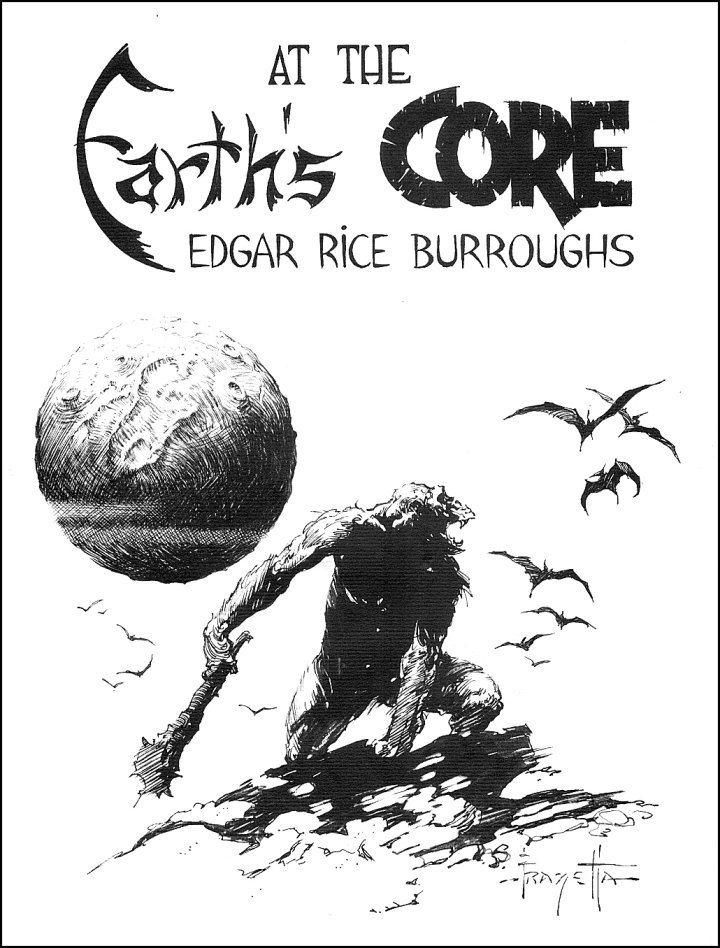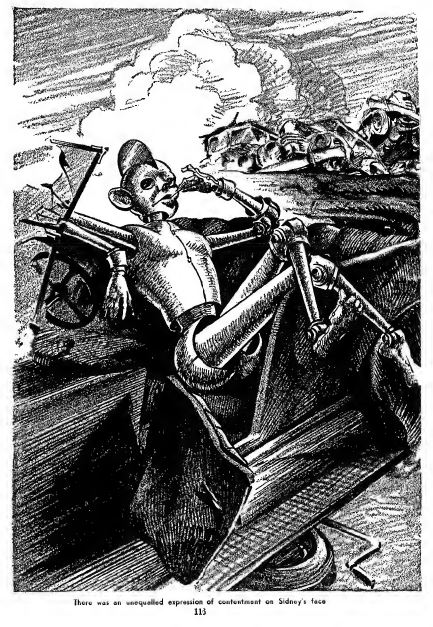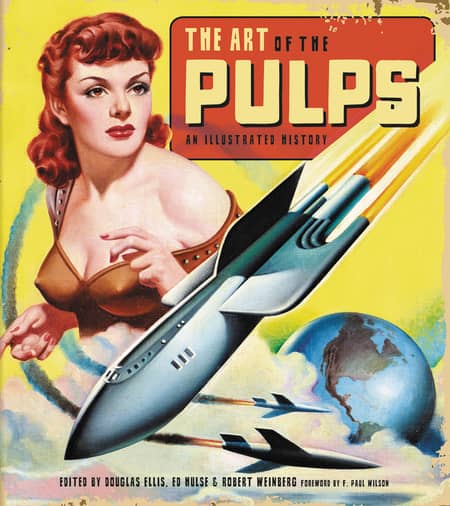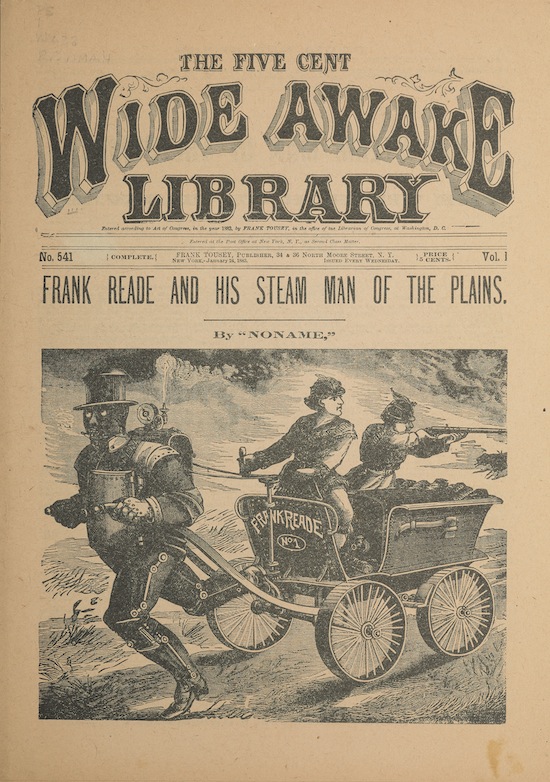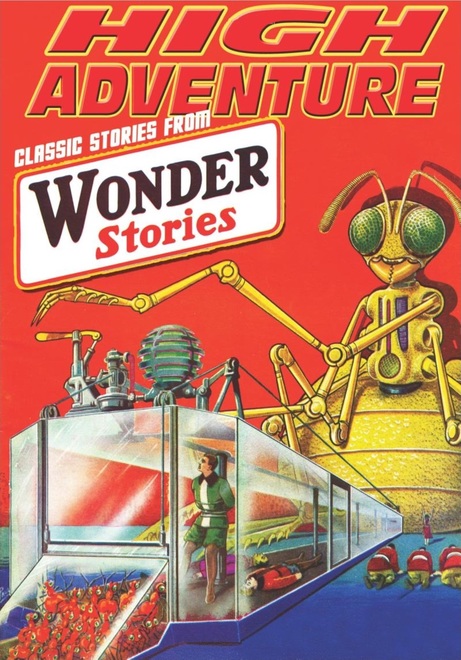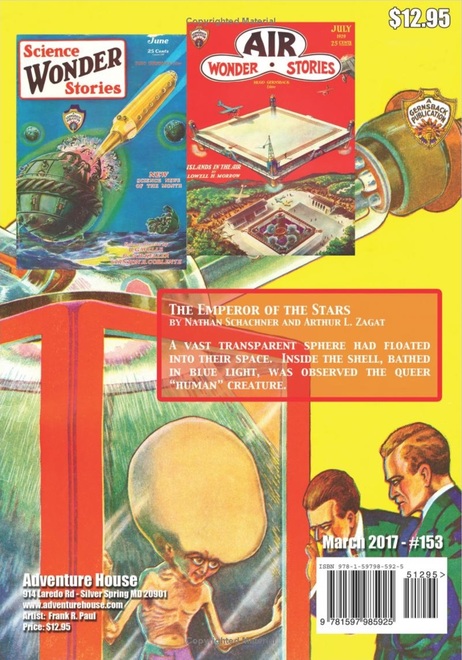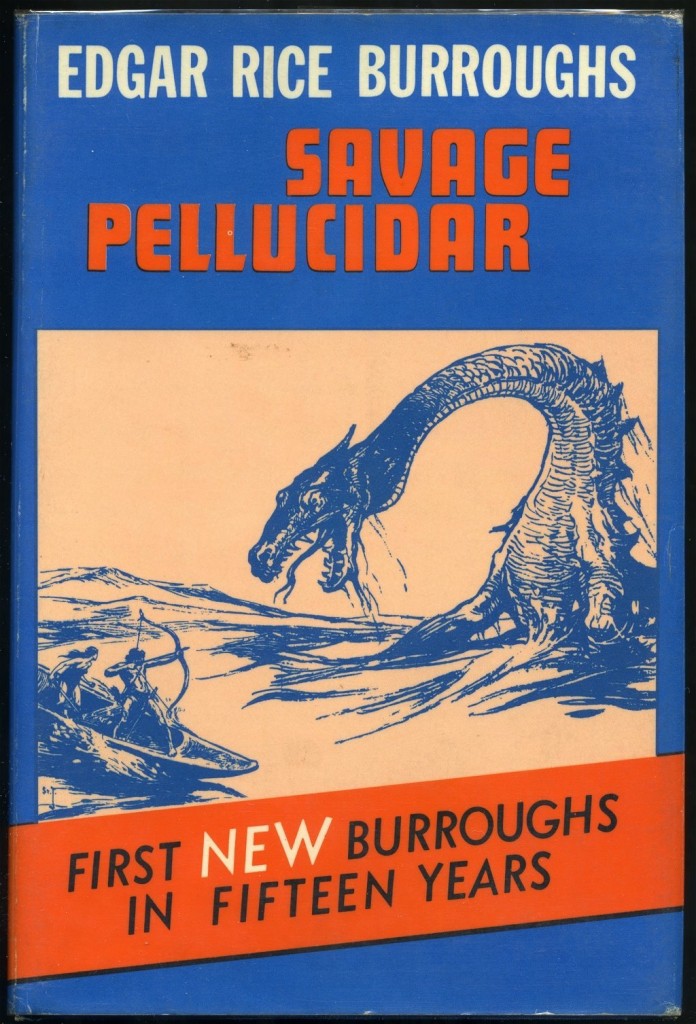 Have we already arrived at the end of Pellucidar? It feels like I started examining this Edgar Rice Burroughs series only a few months ago — but it’s been almost a year since I drilled down to visit At the Earth’s Core. A year may have passed for me, but thirty has passed for Burroughs, and counting the time until the last unpublished novella was collected in Savage Pellucidar, the gap widens to fifty years. If you read At the Earth’s Core in the pulps as an enthusiastic thirteen-year-old, you’d be close to retirement age by the time you could buy the last book and have a complete Pellucidar set.
Have we already arrived at the end of Pellucidar? It feels like I started examining this Edgar Rice Burroughs series only a few months ago — but it’s been almost a year since I drilled down to visit At the Earth’s Core. A year may have passed for me, but thirty has passed for Burroughs, and counting the time until the last unpublished novella was collected in Savage Pellucidar, the gap widens to fifty years. If you read At the Earth’s Core in the pulps as an enthusiastic thirteen-year-old, you’d be close to retirement age by the time you could buy the last book and have a complete Pellucidar set.
Wait, what am I talking about? This is Pellucidar. Time is meaningless here! I started writing this article series yesterday — or maybe a century ago, and the books were all published either over a span of one year or five hundred years. It’s all the same under the perpetual noonday sun.
Our Saga: Beneath our feet lies a realm beyond the most vivid daydreams of the fantastic … Pellucidar. A subterranean world formed along the concave curve inside the earth’s crust, surrounding an eternally stationary sun that eliminates the concept of time. A land of savage humanoids, fierce beasts, and reptilian overlords, Pellucidar is the weird stage for adventurers from the topside layer — including a certain Lord Greystoke. The series consists of six novels, one which crosses over with the Tarzan series, plus a volume of linked novellas, published between 1914 and 1963.
Today’s Installment: Savage Pellucidar (1963)
Previous Installments: At the Earth’s Core (1914), Pellucidar (1915), Tanar of Pellucidar (1929), Tarzan at the Earth’s Core (1929–30), Back to the Stone Age (1937), Land of Terror (1944)
The Backstory
I’ve told this tale before with Escape on Venus and Llana of Gathol, the sister works of Savage Pellucidar, but once more won’t hurt. At the start of the 1940s, Edgar Rice Burroughs experimented writing novels in three of his settings — Mars, Venus, and Pellucidar — as sets of four linked novellas. Each novella was capable of standing on its own but could later fit together with the other three for book publication. The idea may have been the suggestion of Cyril Ralph Rothmund, business manager for ERB Inc., who first wrote a letter to the editor of Ziff-Davis Magazines with the format proposal. It was an experiment of necessity, since the pulps were turning away from serializations as more of the weekly magazines dropped to monthly publication. Burroughs approached the three books as a round-robin, changing from one setting to the next to finish all the novellas.
…
Read More Read More


